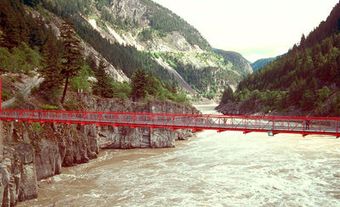The term dioxin applies to any of 75 chlorinated derivatives of dibenzo-p-dioxin. The various types of dioxin are quite different from one another, the greatest difference being in their toxicity. The most toxic of these compounds is 2,3,7,8-TCDD, one of the tetrachlorinated isomers of dibenzo-p-dioxin. Dioxins are chemicals that serve no useful purpose; in other words, they are pollutants that have no conversion value.
At present, the main source of dioxin is low-temperature combustion—burning accompanied by black smoke, as in a campfire or a forest fire, both relatively common phenomena in Canada—or incineration of waste materials that contain non-flammable synthetic products. Several hundred people have suffered tremendously from chloracne, a serious form of acne caused by 2,3,7,8-TCDD that was produced in large volumes in the manufacturing of various substances such as herbicides. Dioxins can be destroyed by ultraviolet radiation (for example, from sunlight) and by incineration at high temperatures.
Dioxins also vary widely in the ways that they affect various species. Guinea pigs, for example, are especially sensitive to dioxins, some of which are more toxic to them than 2,3,7,8-TCDD, while chickens are highly sensitive to them and hamsters far less so. Human fatty tissue contains 5 to 10 parts per billion of 2,3,7,8-TCDD, and experts estimate that the human threshold of tolerance is far higher than this natural level. Dioxins exist only in negligible concentrations, and only recently have new methods been developed that have enabled researchers to determine that they are present almost everywhere. Dioxins have thus become a political problem about which a great deal of information is now available.

 Share on Facebook
Share on Facebook Share on X
Share on X Share by Email
Share by Email Share on Google Classroom
Share on Google Classroom


